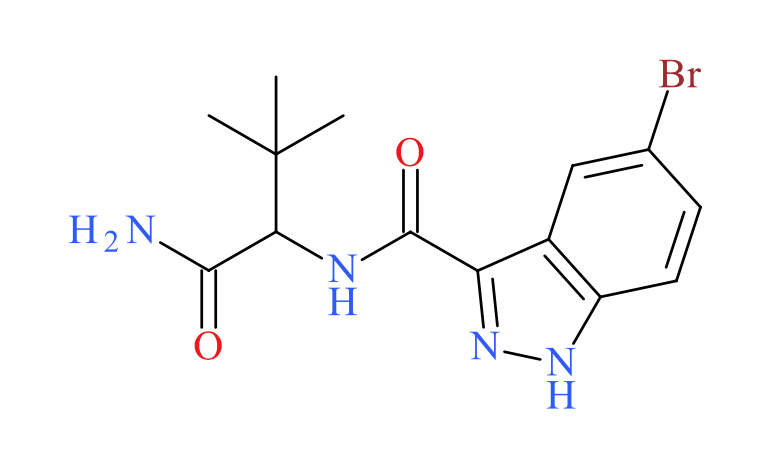ADB-5Br-INACA
ADB-5Br-INACA is classified as a synthetic cannabinoid. Synthetic cannabinoids have been reported to cause psychoactive effects similar to delta-9-tetrahydrocannabinol (THC). Synthetic cannabinoids have caused adverse events, including deaths, as described in the literature. Little information is currently known about the activity, potency, and/or toxicity of ADB-5Br-INACA. However, recent in vitro studies have shown ADB-5Br-INACA to exhibit cannabinoid (CB) receptor activity (unpublished data by Deventer MH et al.; Ghent University), but overall potency is expected to be low. New synthetic cannabinoids continue to emerge among the recreation drug supply internationally, seemingly as replacements after a synthetic cannabinoid class-wide ban implemented by China in July 2021 which included most traditional indole and indazole structural scaffolds.1 Many of these new synthetic cannabinoid analogues are unstudied with pharmacological and human effects undetermined. Currently, ADB-5Br-INACA is not a scheduled substance in the United States.
- Class:
- Cannabinoid
- Appearance:
- Plant-Like Material
- Formula:
- C14H17BrN4O2
- MW:
- 353.2
- [M+]:
- 352
- [M+H]+:
- 353.0608
- IUPAC:
- 5-bromo-N-(1-carbamoyl-2,2-dimethyl-propyl)-1H-indazole-3- carboxamide
- Report Date:
- May 17, 2022









